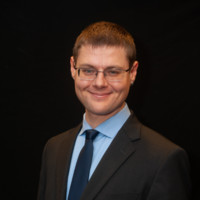So many companies are shifting their employees to working from home to address the coronavirus pandemic. Yet they’re not considering the potential disasters that might occur as a result of this transition.
An example of this is what one of my coaching clients experienced a few months ago, before the pandemic hit. Pete is a mid-level manager in the software engineering unit of a startup that quickly grew to 400 office-based employees doing Electronic Health Records (EHRs). He was one of the leaders tasked by his company’s senior management team with shifting employees to a work-from-home setup, due to rising rents on their office building.
Specifically, Pete led the team that managed the transition of all 400 employees toward teleworking, as he had previously helped small teams of 3 to 6 people transition to a work-from-home situation in the past. However, the significantly bigger number of people they now had to assist was proving a challenge. So too, was the short amount of time available for this project — only four weeks.
When Pete approached me for advice, I recommended the “Failure-Proofing” strategy; a practical and easy-to-use technique to defend against planning and project disasters.
Step 1: Imagine that the decision, project, or process failed, and brainstorm reasons for why it failed.
Meet with key stakeholders and discuss your plan. Make sure to provide all the details. Next, ask participants to imagine a future where the plan failed. Doing so empowers everyone, even those who are confident that the plan will succeed, to tap into their creativity and come up with reasons why it failed.
Each participant should anonymously write out three possible reasons why the plan failed. The reasons should include internal decisions, such as manpower or budget restrictions and external factors, such as new policies set by government agencies.
Next, the facilitator gathers the statements and discusses the central themes around why the plan failed. The facilitator should highlight reasons that would not usually be raised, had the discussion not been anonymous. If you do this technique yourself, list down separate reasons for the plan’s failure from the perspective of different viewpoints.
Going back to Pete, he decided to gather a group of six stakeholders — one manager from each of the four departments needing to shift to work-from-home, and one team leader from the two teams that would provide auxiliary support to Pete’s team during the process. He also recruited Ann, a member of the firm’s Advisory Board, to be an independent facilitator.
Ann discussed the current plan, which was to shift all 400 employees to a remote work setup within four weeks. Everything, including business meetings, would be done online after the four-week period. Pete’s team would migrate the employees in batches of 100 employees per week and the records division would be last, giving ample time to convert documents and processes to digital platforms.
After outlining this plan, everyone submitted their anonymous reasons for failure. Ann read out the responses, which highlighted a key issue: The plan would fail because it wasn’t communicated in a clear and timely manner. Most of the participants raised doubts that management could communicate the idea properly, due to a history of miscommunication within the company. Knowing this fact in advance, prepared everyone to make it a success.
Step 2: Brainstorm ways to fix problems and integrate your ideas into the plan.
Pick several failure scenarios from the exercise above and think of ways to solve them. This should include how to tackle mental blind spots and cognitive biases. Also, present any evidence that indicates that the potential failure is happening, or could happen. For this step, it’s critical to have people with authority in the room.
The facilitator should write down potential solutions. If you’re going through this step yourself, ask for outside input at this point.
Circling back to Pete’s discussion group: Mary, an HR manager, took on the task of addressing the communication problem that was identified earlier. She discussed the communication issue around senior management and proposed that they immediately send out a company-wide announcement on the migration to telecommuting and the steps to be taken.
Then, each senior manager had an in-person meetings with their direct reports in middle management, to get buy-in and ensure that the message passed effectively down the chain of command. In turn, the middle managers met with frontline staff and worked out the next steps for each team.
Step 3: Imagine that the decision, project, or process succeeded spectacularly, brainstorm ways of achieving this outcome, and integrate your ideas into the plan.
We’ve tackled failure, so now, let’s imagine that your plan succeeded superbly! This way, your company can maximize its success.
Imagine that you are in a future where your plan succeeded beyond your wildest expectations. Ask each participant to anonymously write the possible reasons for the plan’s success. Then, ask the facilitator to focus on the key themes.
Next, the facilitator gathers everyone’s statements and leads the group in discussing the results. Assess each reason for success and decide which ones need attention. Check for cognitive biases as well. After that, come up with ways of maximizing these reasons for success.
The facilitator should write down the ideas to maximize the plan’s success. If you’re going through this step yourself, ask for outside input at this point.
Once again, when Ann read out the statements, there was a key theme: They imagined the plan succeeded because management was responsive to the anxieties and concerns of employees during the transition. To address that, Pete’s team set up a telephone number that staff could text or call, that was always staffed by a member of the group. This gave quick answers to questions from staff.
In short, to prevent work-from-home disasters in this time of transitioning to telework, make sure you imagine failure (and avoid it) and imagine success, too (and maximize it).




































